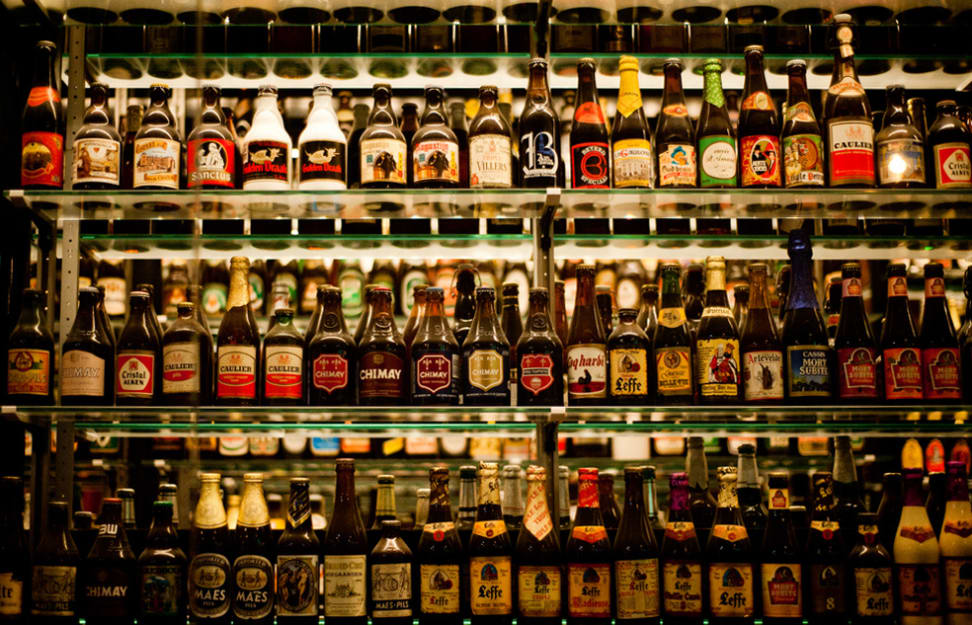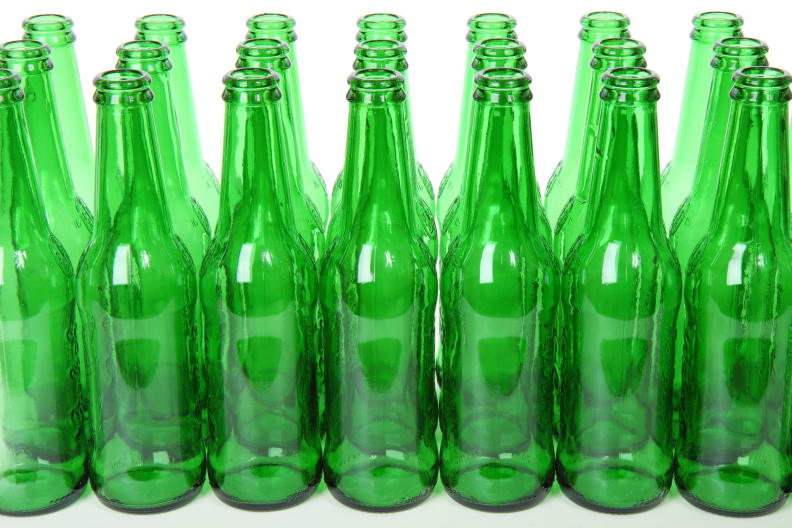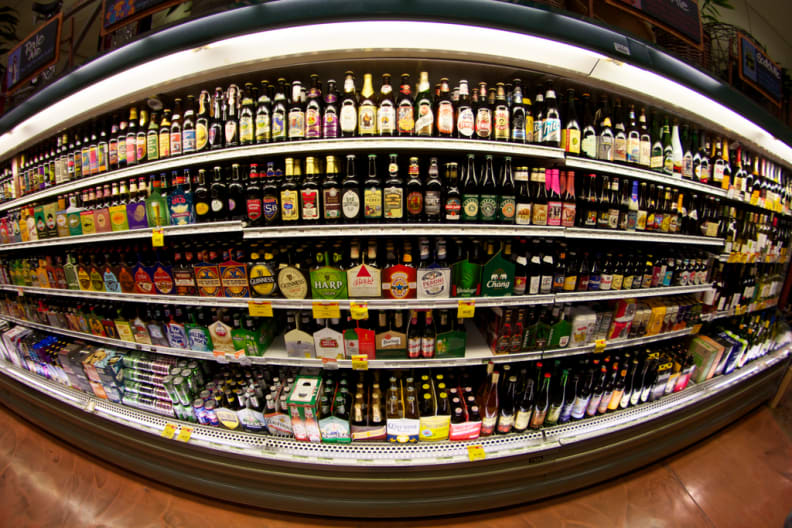Brown Bottles and Tall Tales: 7 Myths About Storing Beer
We debunk or confirm the top 7 beer storage myths.
 Credit:
Flickr user "stevencorrey"
Credit:
Flickr user "stevencorrey"
Recommendations are independently chosen by Reviewed's editors. Purchases made through the links below may earn us and our publishing partners a commission.
Beer is the third-most widely consumed drink in the world, after water and tea. It’s also the oldest and most popular alcoholic beverage. With that kind of demand, it’s not surprising that everyone has an opinion—opinions that breed myths about the best ways to store, age, refrigerate, and drink this tasty malted beverage. But we’re here to clear that all up. Here are seven beer myths exposed to the light of truth.
{{brightcove '3327470749001'}}
1. If Cold Beer Gets Warm, Cooling It Again Will Make It Stale
Wrong! Like Valentine’s Day, this is a myth brought on by some wily marketing gurus, most likely that brand that won’t stop talking about how “cold” their beer is. The fact is, beer experiences substantial fluctuations in temperature during shipping. Of course, you don’t want these changes to be drastic, and excessive heat will certainly ruin your beer. But the notion that it can only be refrigerated once is a total myth.
2. Sunlight Skunks Beer
True! Sunlight is the nemesis of beer—not only in storage but in the fermentation process as well. Ultraviolet light, in particular, “skunks” beer. But before I explain how, it’s probably a good idea to clarify the difference between staleness and “skunkiness.”
There are “off” flavors, and then there are “skunky” flavors; the former is the result of poor carbonation or excessive heat, and the latter—an odorous, rubbery taste—is the result of a photochemical reaction. Specifically, UV light breaks up acids in the hop plant (an essential bittering agent in beer) to create a nasty little compound called “3-methylbut-2-ene-1-thiol.” or “MBT.”
{{amazon name="SPT Under-Counter Beer Froster", asin="B015WOWLUU", align="right"}} This wordy concoction combines with other sulfurous chemicals to create a horrid odor that is darn close that of a skunk, and even more oppressing in the realization that your precious brew has been ruined. In fact, researchers at the University of North Carolina even found a similarity between the chemical composition of skunked beer and that of the anal glands of actual skunks.
The lesson? Don’t expose your beer to excessive sunlight—or really any light for that matter. It’s just another reason to refrigerate beer, as even prolonged indirect sunlight will cause this very basic chemical reaction. Interestingly, this is not a threat with wine, cider, or mash liquor, as none of these beverages contain hops.
3. The Color of the Bottle Affects Beer’s Shelf Life
Yes and no. It’s not the color of the bottle so much as its translucence that affects beer’s long-term quality. Clear and green bottles allow in significantly more UV light than brown ones. This leads to skunking, as mentioned above. So if you were to store green or clear bottles in complete darkness, then there would be no discernible difference in shelf life from that of a brown bottle in similar conditions.

Green doesn't necessarily mean good.
For whatever reason, green bottles are rife among European imports (Heineken, Stella Artois, Beck’s, and Pilsner Urquell, to name a few). You may even have noticed that these brews are much better on tap (from a opaque keg) than in the bottle—but you could argue the same for any beer.
Once again, this is really only a threat if you don’t refrigerate your beer, as coolers and refrigerators keep sunlight out. It is worth noting, though, that beer that’s been sitting on the store shelf for a while is at a higher risk of skunking or going stale. For this reason, most craft beers include a “freshness” tab that tells you how long it’s been since it was bottled.
4. Beer Must Be Shipped, Stored, and Aged Cold
So, so wrong. In fact, certain kinds of beer—mainly unpasteurized, bottle-conditioned craft beer—can be aged in cellars, just like wine! While cooler temperatures are ideal, most experts agree that anywhere in the 40-70 degree range is fine for dry storage—again, as long as you keep out the sunlight.
Refrigeration is a crucial part of enjoying good beer. But it’s actually discouraged when it comes to long-term storage of corked beers, used mainly for Belgian-style ales.
Despite some fridges’ abilities to regulate humidity levels, Beer Advocate explains that prolonged storage in artificial cooling chambers will dry out the cork, allow small amounts of air to enter, and eventually spoil the beer. Best to age these beers in a cellar with moderate humidity, which describes pretty much every cellar ever.
5. Putting Beer in the Freezer Is an Easy Way to “Quick Chill” It
This is true, but with a caveat: Do not ever freeze beer. Anyone who’s ever put a brew in the freezer to chill it but then forgot it was in there knows how disastrous this scenario can be. 70-proof liquor (or higher) is fine, but beer will explode when frozen.
That said, placing a beer in the freezer for a few minutes should be fine. Even then you should be careful, as you may still alter the taste of the beer. According to the American Homebrewers Association, freezing beer alters the molecular structure of the proteins in the beverage. It can also reduce the carbonation level and, in the case of bottle-conditioned brew, possibly kill the yeast.
On a related note, the Eisbock style of beer (like the infamous Naty Ice) uses intentional freezing in the production process. Brewers chill the beer to the point where it partially freezes. They then remove the slushy parts, so as to create a more concentrated and alcoholic beverage (water freezes at a higher temperature than ethyl alcohol). However, this process usually reduces the hop and malt presence in favor of the alcohol itself.
But if you really want to impress your friends, the LG “Blast Chiller” is perhaps the most extravagant—and downright silly—way to cool beer quickly. Despite our well-documented enthusiasm for this awesome feature, it's only available on certain models.
6. Beer Should Be Stored Upright.
True. There are a few reasons why beer should not be placed on its side, and this applies to both corked and capped bottles, and especially to bottle-conditioned brews.
First, the yeast—that magical little organism that eats sugar and poops out alcohol and carbon dioxide (the process of fermentation). Yeast is critical to beer, but the sediment it leaves behind has a way of corrupting flavor; you want the yeast sediment (dead cells and chemical byproducts) to settle at the bottom of the beer.
According to Beer Advocate, prolonged storage on the side will create a “yeast ring” along the walls of the bottle. This is why there’s a separate craft to pouring beer, and why you’re supposed to decant the liquid and “filter” out the gunk at the bottom.

There's a reason beer at the store is placed upright. It's not wine! (Credit: Flickr, "ethan john" [CC BY-NC-ND 2.0])
Second, upright storage limits the amount of beer that’s directly exposed to air (the neck of a bottle is narrower than the barrel). This slows the process of oxidation and prolongs the life of the beer.
Finally, upright storage is especially important for corked beers. When a beer is stored on its side, the cork—by virtue of being in contact with the beer—will gradually impart its own cork flavors on the beer, and some corks contain chemicals and other ingredients that will exacerbate this “corruption” of the beer.
7. Bottles Are Better Than Cans.
Wrong! Well, actually, this all comes down to personal taste. Canned beer has gotten a bad rap in recent decades because it’s often associated with mass-market, “cheap” beer. However, craft brewers are beginning to can their beer—212 breweries, according to CraftCans.com, including notable names like Sierra Nevada and Brooklyn Brewery.

Easy to open and apparently not substantially better than bottled beer. What's not to love?
Some craft brew fanatics even swear by the distinctive flavor of canned brew. The Huffington Post even conducted a blind taste test and found participants preferred the taste of canned beer to bottled three times out of four. But putting taste aside, you can’t deny that canned beer is much easier to store and transport—not to mention, you don’t need a bottle opener.
Related Video
{{brightcove '3952655564001'}}



